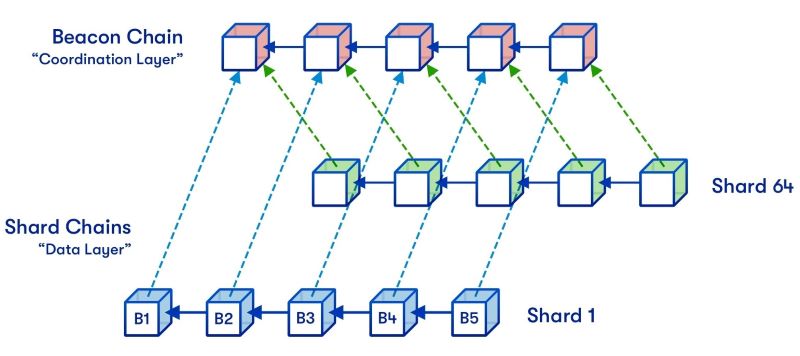Unlock the power of scalability with sharding technology. Discover how this innovative approach revolutionizes blockchain performance, enabling faster transactions, reduced latency, and enhanced efficiency for the next generation of decentralized applications.
What is sharding technology?
Sharding is a technique that enhances blockchain scalability by dividing the network into smaller, independent segments called shards. Each shard manages its own data and transaction history, allowing for increased transaction throughput and reduced latency. While sharding offers a promising solution for blockchain scalability, it also presents challenges related to security and complexity, requiring careful consideration and robust implementation to ensure the overall integrity and functionality of the network.
What is the purpose of sharding technology?
The primary purpose of sharding technology is to address the scalability limitations of blockchain networks. By partitioning the blockchain into smaller, manageable shards, sharding allows for parallel processing of transactions and smart contracts, significantly increasing the network’s capacity to handle a larger volume of activity. This enhanced scalability enables faster transaction confirmation times, reduced latency, and improved overall efficiency, making blockchain technology more viable for real-world applications with high transaction volumes.

How does sharding technology work?
Sharding enhances blockchain performance by horizontally partitioning its data. This means that instead of each node in the network storing the entire blockchain’s data, the data is split into smaller, manageable segments called shards. Each shard is processed by a subset of nodes, allowing parallel processing of transactions and smart contracts. This parallel processing significantly boosts the network’s capacity to handle a higher volume of transactions per second, improving overall scalability and efficiency.
The specifics of how sharding is implemented can vary depending on the blockchain protocol. However, in general, each shard maintains its own state and transaction history. Transactions are typically routed to the appropriate shard based on their address or some other identifier.
While sharding offers a promising solution to blockchain scalability, it does introduce challenges, particularly regarding security and communication between shards. Developers must implement robust mechanisms to ensure data integrity, prevent malicious attacks, and maintain consensus across the network.
How is it helping Blockchain Protocols?
Sharding is revolutionizing blockchain protocols by significantly improving their scalability and efficiency. It addresses the limitations of traditional blockchains, where every node had to process every transaction, leading to bottlenecks and slow transaction times.
By dividing the blockchain into smaller shards, each managed by a subset of nodes, sharding enables parallel processing of transactions. This parallel processing drastically increases the network’s throughput, allowing it to handle a much higher volume of transactions per second. As a result, blockchain protocols can achieve faster transaction confirmation times, reduced latency, and improved overall performance.

This enhanced scalability is particularly crucial for blockchain applications that require high throughput, such as decentralized finance (DeFi) platforms, gaming applications, and supply chain management systems. By overcoming scalability limitations, sharding makes blockchain technology more practical and accessible for a wider range of real-world use cases.
Moreover, sharding can also reduce the hardware requirements for individual nodes, as they no longer need to store the entire blockchain’s data. This makes it more feasible for individuals and smaller organizations to participate in the network as validators, promoting decentralization and security.
Overall, sharding is a game-changer for blockchain protocols, providing a viable solution to scalability challenges and unlocking the full potential of blockchain technology for a variety of applications.
The Future of Sharding technology
Despite the challenges, sharding is viewed as a potential solution to the scalability issues faced by many blockchain networks. As more blockchain projects implement sharding, we may see enhancements in transaction speed and scalability across the blockchain space. It’s important to remember that sharding is just one of many potential solutions to the scalability problem, and the future of blockchain technology will likely involve a combination of different strategies.
Sharding is a game-changer in the world of blockchain, offering a viable solution to scalability challenges and paving the way for a more efficient, accessible, and user-friendly decentralized internet. By dividing the blockchain into smaller, manageable units, sharding unlocks the full potential of this groundbreaking technology, making it more adaptable to real-world applications and driving innovation across various industries.
Want to stay ahead of the curve in the ever-evolving world of blockchain? Keep yourself informed with the latest news and insights on cryptocurrency and sharding technology at Crypto Currency Bitcoin Price.Your journey to understanding the future of blockchain starts here.
